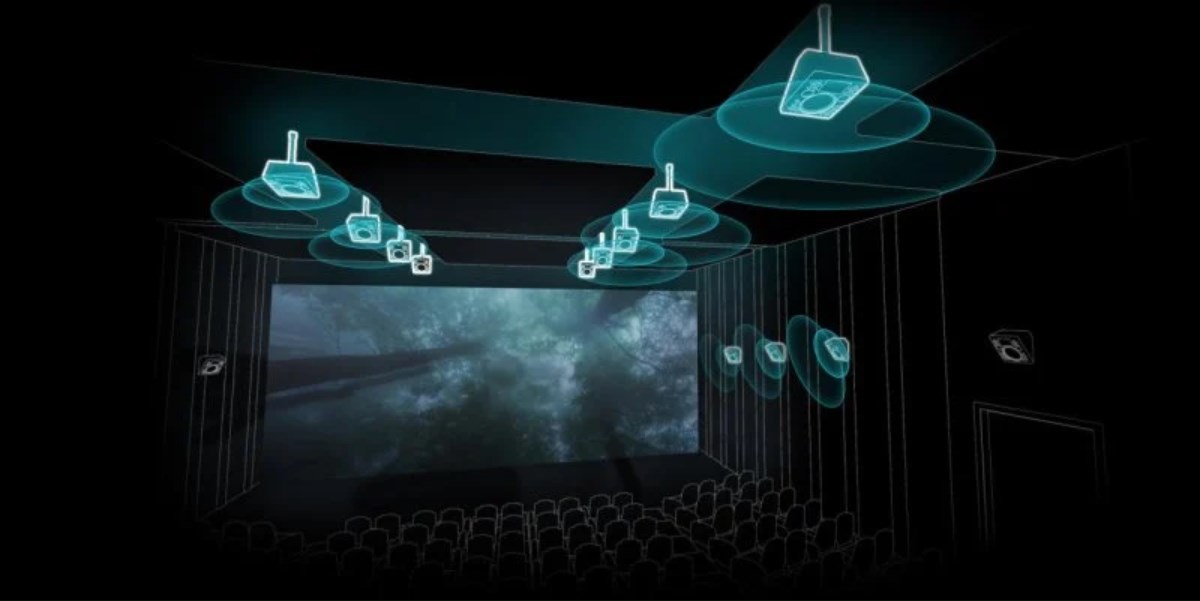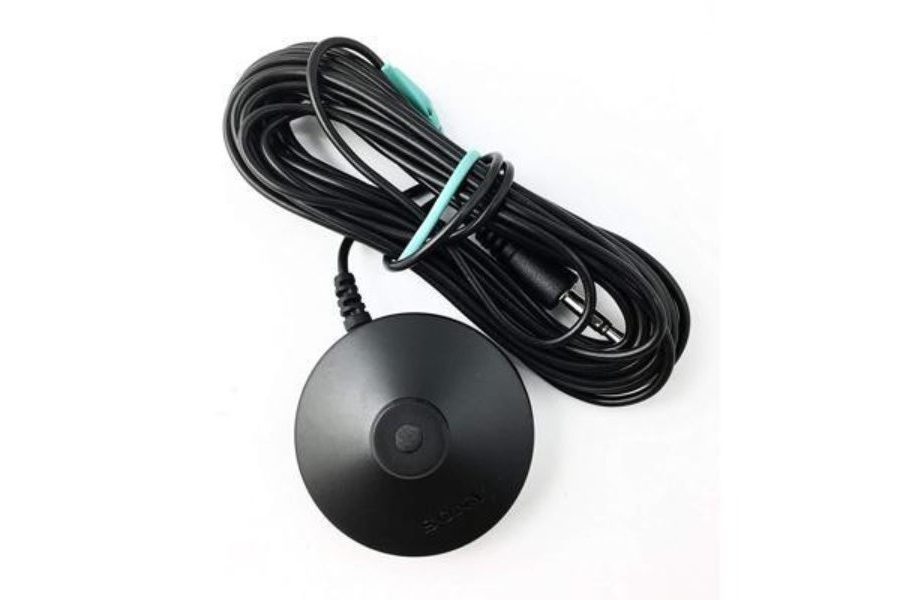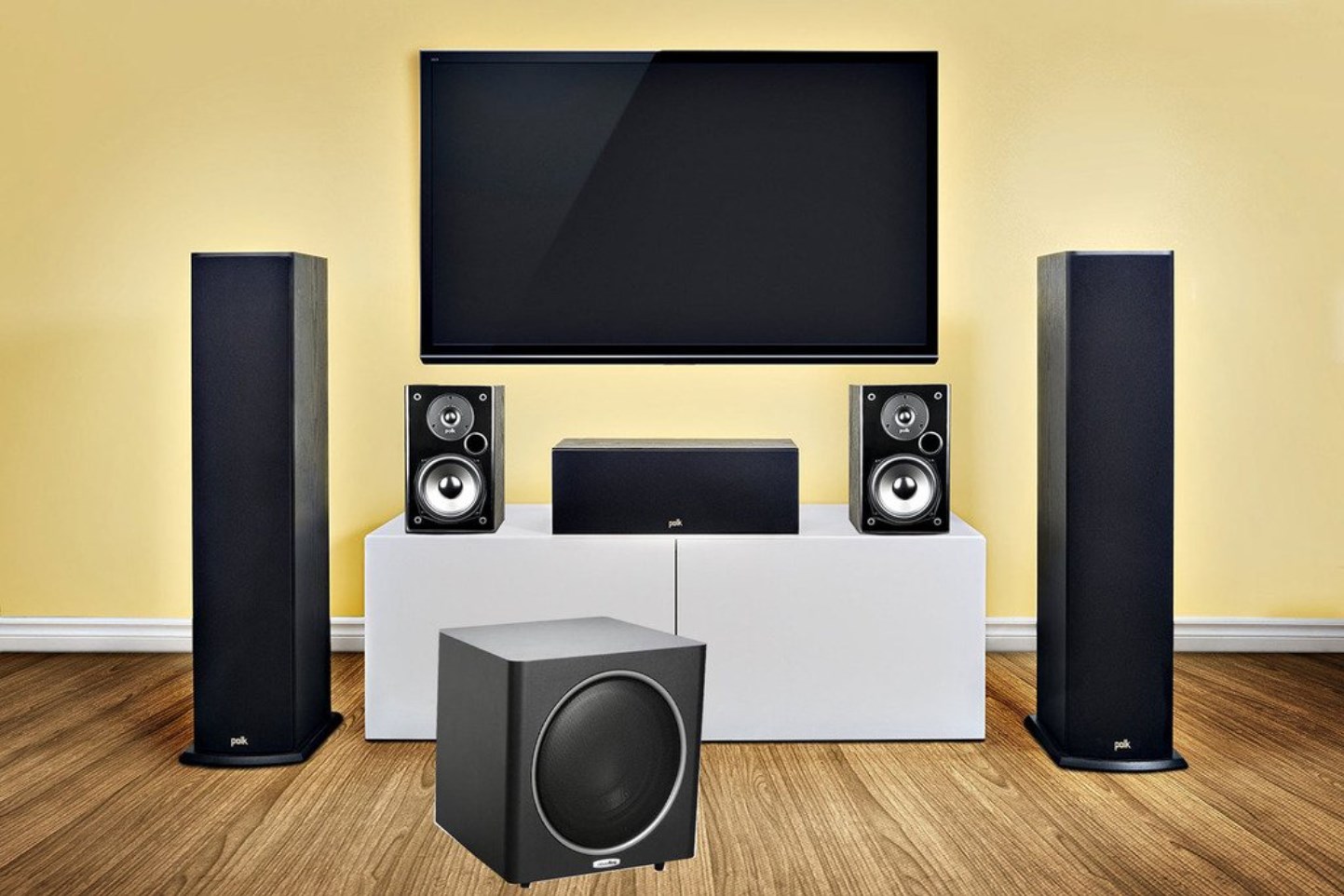Multi-Channel Home Theater: Everything You Need to Know
- Multi-channel home theaters use multiple speakers around a room to create an immersive audio experience. They are ideal for enhancing movies, music, and games with front, center, rear speakers, and a subwoofer.
- There are various types, such as 2.1, 5.1, 7.1, 9.1 systems, and Dolby Atmos. They work by combining audio sources, an audio processing unit, speakers, wiring, and surround sound formats.
- Setting up a multi-channel system involves calibration, connection, and testing. When choosing a system, consider budget, room size, speaker configuration, and compatibility. High-end headphones and soundbars are also good alternatives.
Ever wished your movie nights felt more like you’re in the middle of the action? Or maybe you want to hear every footstep and explosion like it’s happening right around you in the games you play. That’s where multi-channel home theater systems step in. They’re like magic for your ears, making your living room feel like a mini cinema or a gaming wonderland.
In this guide, we’re breaking down everything about these cool systems – what they are, how they work, how to set them up, and some top-notch recommendations. So, if you’re curious about turning your regular space into a sound paradise, stick around as we unravel the mysteries of multi-channel home theaters!
Table of Contents
- What Is a Multi-Channel Home Theater
- Types of Multi-channel Home Theaters
- How Multi-Channel Home Theater Works
- What to Look For in a Multi-Channel Home Theatre
- How to Set Up Multi-Channel Home Theater
- Benefits of Multi-Channel Home Theaters
- Drawbacks of Multi-Channel Home Theaters
- Best Multi-Channel Home Theater Recommendations
- Alternatives to Multi-Channel Home Theater
- Wrapping Up

What Is a Multi-Channel Home Theater
A multi-channel home theater is a sound system that uses multiple speakers strategically placed around a room to create a more immersive audio experience. Instead of sound coming from just one direction, like a regular speaker, it comes from different spots, making it feel more like you’re part of the action.
This setup typically includes a combination of speakers for different roles, such as:
- Front Speakers: Placed in the front of the room, often on either side of the TV or screen.
- Center Channel Speaker: Positioned in the center, usually above or below the TV, to enhance dialogue clarity.
- Rear or Surround Speakers: Placed behind or to the sides of the seating area to create a sense of space and depth in the audio.
- Subwoofer: Handles low-frequency sounds and is typically placed anywhere in the room for optimal bass distribution.
The idea is to surround you with sound, making movies, music, and games feel more lifelike and engaging.
READ MORE: What are the benefits of a Home Theater PC (HTPC)? ➜
Types of Multi-channel Home Theaters
Multi-channel home theaters come in various types, offering different configurations and features to cater to diverse preferences and needs. Here are some common types:
1. 2.1 Channel System
This system includes two main speakers for regular audio and a subwoofer for low-frequency sounds. It’s a basic setup suitable for smaller spaces.

2. 5.1 Channel System
A standard 5.1 surround sound configuration features five speakers and a subwoofer. The “5” represents the main speakers (front left, center, front right, rear left, rear right), and the “1” represents the subwoofer. It’s a popular choice for home theater setups.

3. 7.1 Channel System
Building upon the 5.1 system, a 7.1 channel system includes two additional rear speakers. This provides an even more immersive surround sound experience, especially in larger rooms.

READ MORE: Best 7.1 Surround Sound Headsets For Gaming ➜
4. 9.1 Channel System
This system further extends the surround sound experience by adding two more speakers to the setup. It typically includes front-left, center, front-right, rear-left, rear-right, and four additional speakers for a more expansive audio field.

5. Dolby Atmos
Dolby Atmos introduces height channels to the audio setup, allowing sound to come from above as well as around the listener. Configurations can include 5.1.2 (five main speakers, one subwoofer, and two height speakers) and beyond.

SEE ALSO: How to Set Up Dolby Atmos Spatial Sound on Windows 10 ➜
6. Sound Projector
They use a single-unit speaker that projects sound in multiple directions to create a surround sound effect. Compact in design, they are suitable for smaller spaces.

How Multi-Channel Home Theater Works
A multi-channel home theater has many components that work together to deliver an immersive surround sound experience. Here, we have described its parts and their functionalities.
1. Audio Sources
Multi-channel home theater systems start with various audio sources. These can be devices like Blu-ray or DVD players, streaming gadgets, gaming consoles, or media servers. These sources provide the content, whether it’s a movie, music, or a game, and set the stage for the audio journey.

2. Audio Processing Unit
Think of the audio processing unit as the brain behind the operation. Typically located in an AV receiver or a dedicated sound processor, this unit takes the audio signals from your sources, decodes them, and then sends them where they need to go. It’s responsible for enhancing the audio and ensuring a balanced speaker distribution.

3. Speakers
The ensemble of speakers in a multi-channel home theater system serves as the vocal cords, translating electronic signals into a rich tapestry of sound. The main components include:
- Front Speakers (Left, Center, Right): These handle the main audio, like dialogue and central sounds.
- Surround Speakers (Rear Left, Rear Right): These create a sense of space and depth by immersing you in sound from the sides or behind.
- Subwoofer: Specializing in low-frequency sounds, the subwoofer adds depth and power, especially for things like explosions or deep bass in music.

Combining these speakers creates a surround sound environment, immersing the audience in a three-dimensional auditory experience.
4. Wiring and Connectivity
Wires and connections form the backbone of the system. HDMI cables link your sources, audio processing unit, and display. Speaker wires connect the audio processing unit to each speaker, ensuring synchronized playback. In some setups, wireless options are employed to reduce cable clutter.

READ MORE: Best Speaker Wire – Audiophiles Picks ➜
5. Surround Sound Formats
Surround sound formats are instructions for your sound system. They guide it on creating a more immersive audio experience, making it feel like the sound is coming from different directions.

What to Look For in a Multi-Channel Home Theatre
When buying a multi-channel home theater, keep these points in mind:
- Set a budget and explore systems that offer the best features within your price range, considering options available for various budgets.
- Choose a speaker configuration (e.g., 5.1 or 7.1) that suits your preferences and room size for optimal surround sound.
- Ensure the audio processing unit (AV receiver or sound processor) supports the latest audio formats, HDMI ports, 4K pass-through, and wireless connectivity for a future-proof system.
- Prioritize high-quality speakers from reputable brands to ensure clear and balanced audio reproduction.
- Research the brand’s reputation to assure reliability, good customer support, and warranty options.
- Look for user-friendly systems with clear instructions and calibration tools. Automated calibration features can simplify the installation process.
- Consider systems with flexible speaker placement options and adjustments to accommodate different room sizes.
- Opt for systems with wireless connectivity options for certain speakers to minimize wire clutter and simplify installation.
- Make sure the system is compatible with your preferred content sources, such as Blu-ray players, gaming consoles, or streaming devices, for a seamless entertainment experience.
- Consider systems with the potential for future upgrades to adapt to evolving audio technologies and changing entertainment needs.
READ MORE: Home Theater Power Manager Guide For Ultimate Reliability ➜
How to Set Up Multi-Channel Home Theater
Setting up a multi-channel home theater involves a combination of careful calibration, precise connection, and thorough testing to achieve the optimal audio experience.
↪ Calibration and Room Correction
Begin by placing speakers in optimal positions, following the manufacturer’s guidelines. Use a calibration microphone, often included with the system, to adjust audio settings based on your room’s acoustics automatically. Some systems feature room correction technology to refine the audio output further.

↪ Connection and Configuration
Connect each speaker to the audio processing unit (AV receiver or sound processor) using high-quality cables. HDMI cables are commonly used for their ability to carry both audio and video signals. Configure the system settings, including speaker levels, crossover frequencies, and input assignments, through the on-screen menu or the system’s control app.

↪ Testing and Fine-Tuning
Once connected, play test tones to ensure each speaker produces sound. Adjust speaker levels to achieve a balanced soundstage. Test the system with different types of content, such as movies, music, and games, to fine-tune the settings. Pay attention to dialogue clarity, surround effects, and the overall balance of audio elements.

Benefits of Multi-Channel Home Theaters
The multi-channel home theater provides the following benefits to its users:
- 360-Degree Sound Experience: This system wraps you in sound from every direction, enhancing your enjoyment of movies, music, and games. It’s like being in the middle of the action, where every sound detail comes to life.
- Cinematic Quality for Movies and Games: Imagine feeling the rumble of explosions or hearing dialogues crystal clear, as if you’re part of the movie or game. Small sounds, like a door creaking, also become more impactful, adding to the realism.
- Speaker Placement Flexibility: You have the freedom to arrange speakers in the best possible way for your room. This customization considers the room’s size and layout, ensuring optimal sound quality. Many systems also let you fine-tune the audio to match your room’s acoustics perfectly.
- Versatile Connection: The system allows you to connect different devices, like Blu-ray players, gaming consoles, and streaming devices. This versatility means you can enjoy a wide range of content, all with top-notch audio.
- Personalized Audio Settings: You can adjust the speaker configurations to suit your taste. Whether you want a strong front sound or an even surround sound experience, these systems offer the flexibility to create your ideal audio environment.
Drawbacks of Multi-Channel Home Theaters
With good things come the not-so-good stuff, too. So, here we have described the drawbacks of installing a multi-channel home theater.
- Cost and Investment: A multi-channel system can be expensive, factoring in speakers, an audio processor, quality wiring, and possibly professional setup which requires labor. Maintenance might add extra costs, making it a significant investment, especially for those on a budget.
- Setup Complexity: Installing and calibrating a multi-channel system can be complex. It requires knowledge about speaker placement, wiring, and configuring settings. This process might be time-consuming and often needs expert help for optimal setup.
- Space Needs: These systems need enough room for multiple speakers and a subwoofer. Not everyone has a big enough space for ideal speaker arrangement, which can affect the system’s performance.
- Content Limitations: Not all media is made with multi-channel audio. Some movies, TV shows, or games might not take full advantage of the system, leading to less impressive audio experiences.
- Noise Disturbance: The immersive sound experience is great for the user but can be disruptive to others in the house or nearby. This is a potential issue in shared living spaces, where the powerful sound might not be appreciated by everyone.
Best Multi-Channel Home Theater Recommendations
We have researched and gathered the info on the three best multi-channel home theaters, as described below:
1. Klipsch Black Reference Theater Pack 5.1 Surround Sound System
The Klipsch Reference Theater Pack 5.0 is particularly well-suited for small homes due to its thoughtful design and features. With a compact footprint, this 5.1 surround sound system delivers an immersive audio experience. The down-firing wireless subwoofer is engineered to provide room-filling low frequencies without requiring excessive floor space.

Additionally, the satellite speakers’ keyhole mounts and threaded inserts offer versatile placement options, allowing users to optimize speaker positioning in confined spaces. The wireless connectivity further contributes to a clutter-free setup, promoting an unobtrusive integration into smaller rooms.
Despite its space-saving design, the Klipsch Reference Theater Pack 5.0 doesn’t compromise on audio quality, making it a perfect solution for bringing superior cinematic sound to compact living spaces.
2. Rockville HTS56 1000w 5.1 Channel Home Theater System
The Rockville HTS56 5.1 Channel Home Theater System is a budget-friendly choice for great sound. With a powerful 1000-watt peak and 500-watt program, it includes two front speakers, two rear speakers, a center speaker, and an 8″ subwoofer – all in sturdy MDF material.

Unlike some systems, it ensures all speakers play together no matter the source, providing consistent surround sound. The system features Bluetooth, FM radio, and cool LED lights that sync with the beat. For the price, it’s a solid option for an immersive home audio experience.
3. Polk Audio 5.1 Channel Home Theater System
Polk Audio’s speaker system is designed for impressive sound with 15 speakers. The bookshelf, center, and tower speakers each contribute to a well-balanced, room-filling experience. The system includes a powerful 10-inch subwoofer for extra bass, making it ideal for small-to-mid-size rooms.

Polk’s proprietary dynamic balance technology ensures wider sound dispersion and minimal distortions, providing a three-dimensional surround sound with deep bass. The system is compatible with most home theater AV receivers, offering flexibility for different setup options.
For those seeking an upgradeable multi-channel home theater system, Polk Audio stands out as an excellent choice. With options to expand to 7.1, 9.1, or more channels, this system provides a path for a more immersive audio experience without compromising Polk’s unmatched quality at an affordable price.
READ MORE: HDMI 2.0 vs HDMI 2.1 – Key Differences & Which is Better? ➜
Alternatives to Multi-Channel Home Theater
Here are some alternatives to multi-channel home theaters you can use:
1. Stereo Systems
A stereo system is a simpler alternative, focusing on two speakers to deliver left and right audio channels. While it may not provide the immersive surround experience, it’s a more straightforward setup suitable for smaller spaces or those prioritizing simplicity.

2. Soundbars
Soundbars are space-saving alternative that strikes a balance between audio enhancement and simplicity. They are compact, all-in-one speaker solutions designed to simulate a surround sound experience without requiring multiple speakers.

3. High-Quality Headphones
For a personal and immersive experience, high-quality headphones deliver exceptional audio without the need for external speakers. This option is ideal for individuals who prefer a more private and portable audio solution.

READ MORE: How To Make Home Theater Using Raspberry Pi? ➜
Wrapping Up
There you have it – all the information you need on multi-channel home theaters. Whether you’re aiming for a cinematic escape or a gaming haven, the guide has given you insights into configurations, system types, and considerations for your perfect setup.
Remember, it’s not just about the brand or the specs; it’s about tailoring the experience to your preferences, room size, and budget. So, go ahead, dive into the world of multi-channel audio, create your immersive space, and let the entertainment unfold in ways you’ve never experienced before.
FAQs
Multi-channel systems fit various room sizes. Larger rooms may need more speakers, but there are smaller setups too. Speaker placement and acoustics matter, but with adjustments, multi-channel systems can work well in most spaces.
Consider the size and layout of your room. For smaller spaces, a 5.1 system might suffice, while larger rooms could benefit from a 7.1 or more.
Getting a professional to set up your system ensures it’s done just right. But many multi-channel systems are made to be easy for users. Follow the instructions, use calibration tools, and check online help if needed. If it’s a big or tricky setup, getting help is a good idea.
Absolutely! Multi-channel home theater systems are versatile and can enhance your music listening experience.





